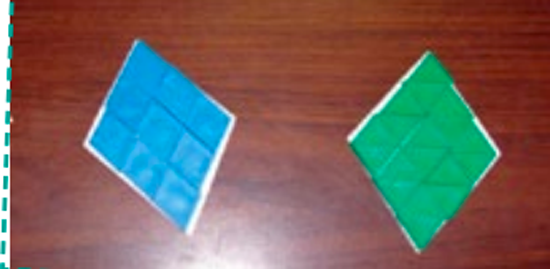E2.5 Use various units of different sizes to measure the same attribute of a given item, and demonstrate that even though using different-sized units produces a different count, the size of the attribute remains the same.
Skill: Measuring an Attribute Using Different Sized Units to Demonstrate That the Size of the Attribute Remains Unchanged despite the Different Results
Measurement is more than a count; it is a spatial comparison. Units enable a spatial comparison to be quantified.
How much length, mass, area, or capacity an object has remains constant unless the object itself has been changed (conservation principle). An amount is not changed by measuring with different units; only the count of units changes. Using smaller units produces a greater count than using larger units (inverse relationship).
Source: The Ontario Curriculum. Mathematics, Grades 1-8 Ontario Ministry of Education, 2020.
Inverse Relationship
The number of units required to determine the measure of an attribute is inversely proportional to the size of the unit of measure used. In other words:
- the smaller the unit used, the greater the number of units required to determine the measurement of the attribute;

- the larger the unit used, the smaller the number of units required to determine the measurement of the attribute.
In the picture above, we see two identical squares. One is covered with 9 blue squares, the other is covered with 18 green triangles. Since the green triangle is half the size of the blue square, it takes more of them to cover the area of the square.
Another example: If two students use a tablespoon and a teaspoon to determine the capacity of a container, the students discover that more teaspoons than tablespoons are needed to determine the capacity of that container since the teaspoon is a smaller unit than the tablespoon.
Although the concept of inverse relationship may seem obvious in this type of situation, it is problematic for many students who are used to direct relationship situations (for example, the greater the distance to be travelled by bus, the longer the travel time). In order to help them understand this concept, teachers should present them with a variety of concrete measurement scenarios that encourage them to make this connection.
Source: translated from Guide d’enseignement efficace des mathématiques, de la maternelle à la 3e année, Mesure, p. 61.
Knowledge: Attribute
To develop a sense of measurement, students in the Primary Division explore the following measurable attributes: length, capacity, mass, area, and time.
